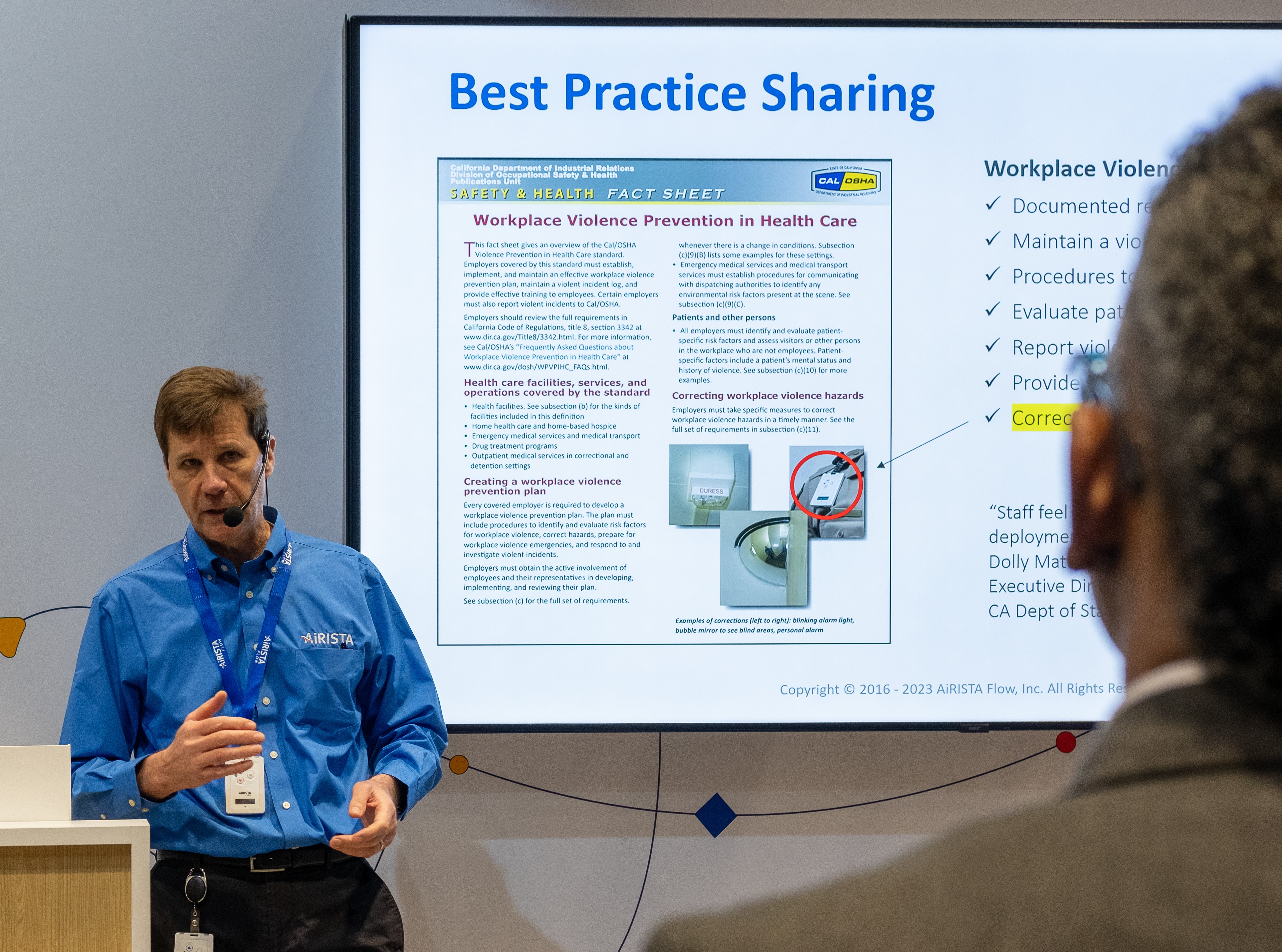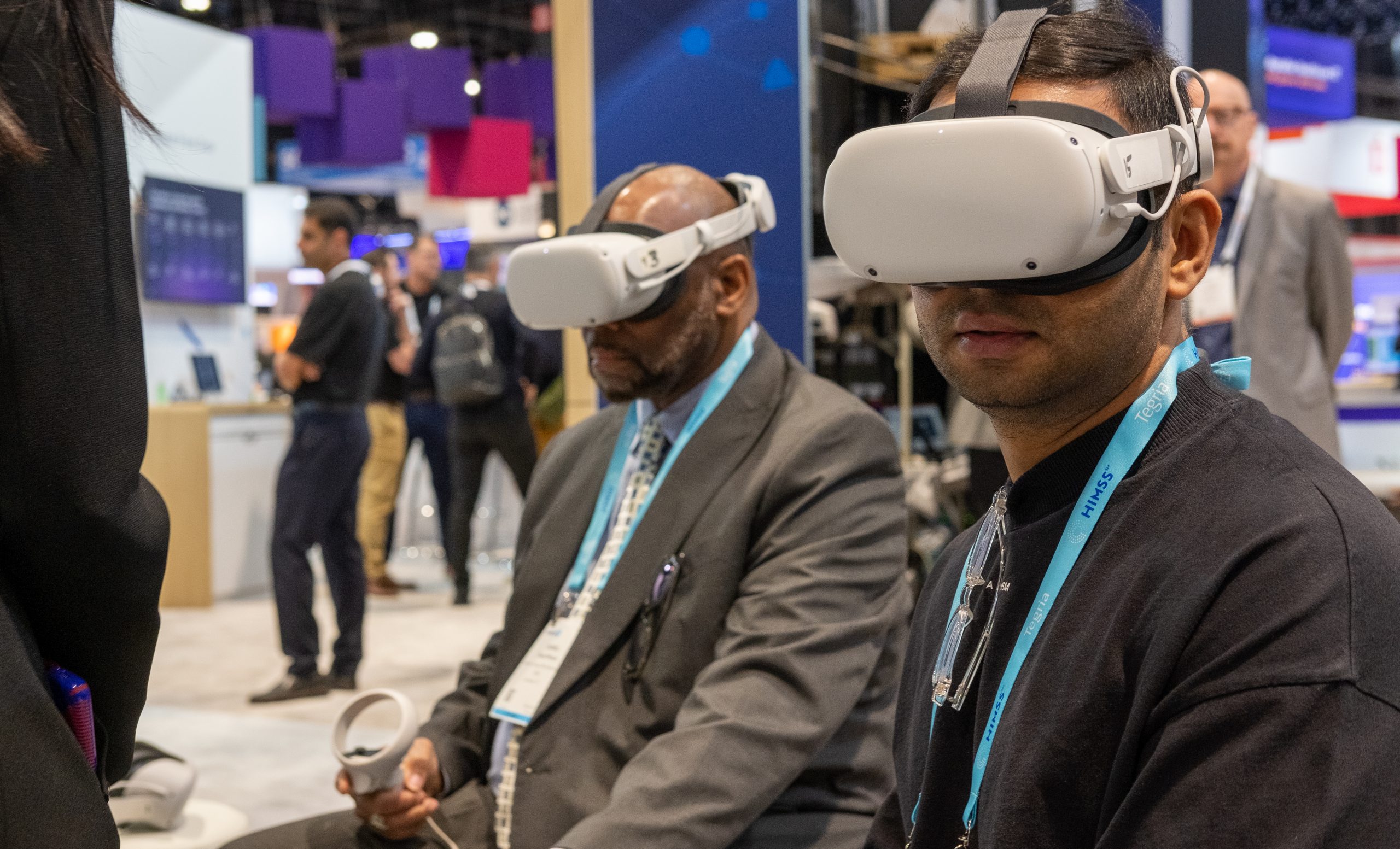Healthcare digitization accelerates as a result of the pandemic.
HIMSS23 attendance was strong. Roughly 35,000 people attended, a nearly 25% increase over 2022. Digitization of healthcare was a major theme, accelerated by Covid and the need to share information and treat patients at a distance. Five themes emerged at the conference in both the sessions as well as exhibiting vendors.
- Staff burnout was on everyone’s mind.
A 2022 survey by the American Association of Critical Care Nurses found, “More than two-thirds (67%) of respondents stated they intend to leave their nursing position within three years.” Any solutions requires a 360 degree view of the problem that extends beyond technology to include staff mental health and increases in nursing school access.
stated they intend to leave their nursing position within three years.” Any solutions requires a 360 degree view of the problem that extends beyond technology to include staff mental health and increases in nursing school access.
Considering 2 nurses are assaulted every hour (Press Gainey, 2022), a safe work environment was the top reason nurses are considering when deciding to leave according to a McKinsey & Company survey. Best practice sharing for developing a safety response plan was the theme of AiRISTA’s theater session in Cisco System’s booth and a demo of our B4n tag in action.
- Artificial Intelligence finds its way into more solutions.
Generative AI is driving solutions for clinical documentation, billing accuracy, and clinical decision support. AI is also making virtual assistants more productive like AiRISTA’s integration with Alexa to bring speech enablement to the process of finding assets from your mobile devices. AiRISTA also demonstrated integration with computer recognition to differentiate boxes of medications. Together with the Meraki ecosystem partner Cogniac, the demo combined real time inventory accounting with video recognition of Advil vs. Tylenol boxes. The video model was trained using the Cogniac cloud and the resulting AI module ran locally in the Meraki camera and drew red boarders and green boarders to distinguish patient medications.
{% video_player “embed_player” overrideable=False, type=’hsvideo2′, hide_playlist=True, viral_sharing=False, embed_button=False, autoplay=False, hidden_controls=False, loop=False, muted=False, full_width=False, width=’500′, height=’281′, player_id=’112777869120′, style=” %}
- Cloud migration is approached cautiously and will be a journey, not a leap.
Although most products showcased were delivered from the cloud, many healthcare providers are looking for solutions that will help them migrate in an multi-step approach. Starting with premises solutions, they are looking for hybrid approaches to manage details like security, integrations, procurement, and billing. One visitor lamented that switching to the cloud is not a cure-all, “You are still stuck with deployment, management and training responsibilities.”
- Device management takes on new importance as the number of devices is exploding and their management creates new challenges.
{% video_player “embed_player” overrideable=False, type=’hsvideo2′, hide_playlist=True, viral_sharing=False, embed_button=False, autoplay=False, hidden_controls=False, loop=False, muted=False, full_width=False, width=’500′, height=’281′, player_id=’112778632343′, style=’max-width: 500px; margin: 0px 20px; width: 100%; display: block; float: left;’ %}
Cheap processors and networking modules are lighting up previously dark devices with intelligence. IOT sensors create streams of data. Equipment must be managed in the home as well as the hospital. All of this creates added responsibility in terms of life cycle management, preventive maintenance and procurement. To improve performance and outcomes, many of these devices will be location aware. Gartner anticipates that by 2025, 40% of assets will be location aware, up from 10% in 2021[i]. IT infrastructure from vendors like Cisco Systems are becoming IOT aware and help consolidate the management of gateways and sensors using existing network devices. For example, AiRISTA’s Angle of Arrival gateway integrates over USB to the Cisco access point and managed from Cisco DNA Center to centralize control.
- Integration moves beyond APIs.
The word “integration” is taking on new meaning with an increase of intelligent devices to manage and healthcare delivery extends beyond the hospital walls. Patient room devices are now in private homes creating a hub and spoke system of integration. And public health data solutions and community mental health platforms become extensions of the EHR system.
The hospital building has become more intelligent creating an opportunity for building management systems to
{% video_player “embed_player” overrideable=False, type=’hsvideo2′, hide_playlist=True, viral_sharing=False, embed_button=False, autoplay=False, hidden_controls=False, loop=False, muted=False, full_width=False, width=’500′, height=’281′, player_id=’112778805852′, style=’max-width: 500px; margin: 0px 20px; width: 100%; display: block; float: right;’ %}
“collaborate” as part of the patient experience. AiRISTA demonstrated real time tracking of tags through integration with a spotlight as it followed a person through the booth. To help create these integrations, AiRISTA offers its Flow Studio design environment, a low-code drag & drop approach to rapid development of connectors and workflows to help systems interoperate.
HIMSS23 shows us that providing care is becoming more challenging as delivery extends beyond hospital walls and the devices used to provide care become more intelligent. Healthcare providers need clear priorities and focused strategies to derive the best outcomes balanced with costs.
[i] Gartner, Emerging Technologies: Venture Capital Growth Insights for Indoor Location Services, Annette Zimmermann, Danielle Casey, Tim Zimmerman, May 2021





